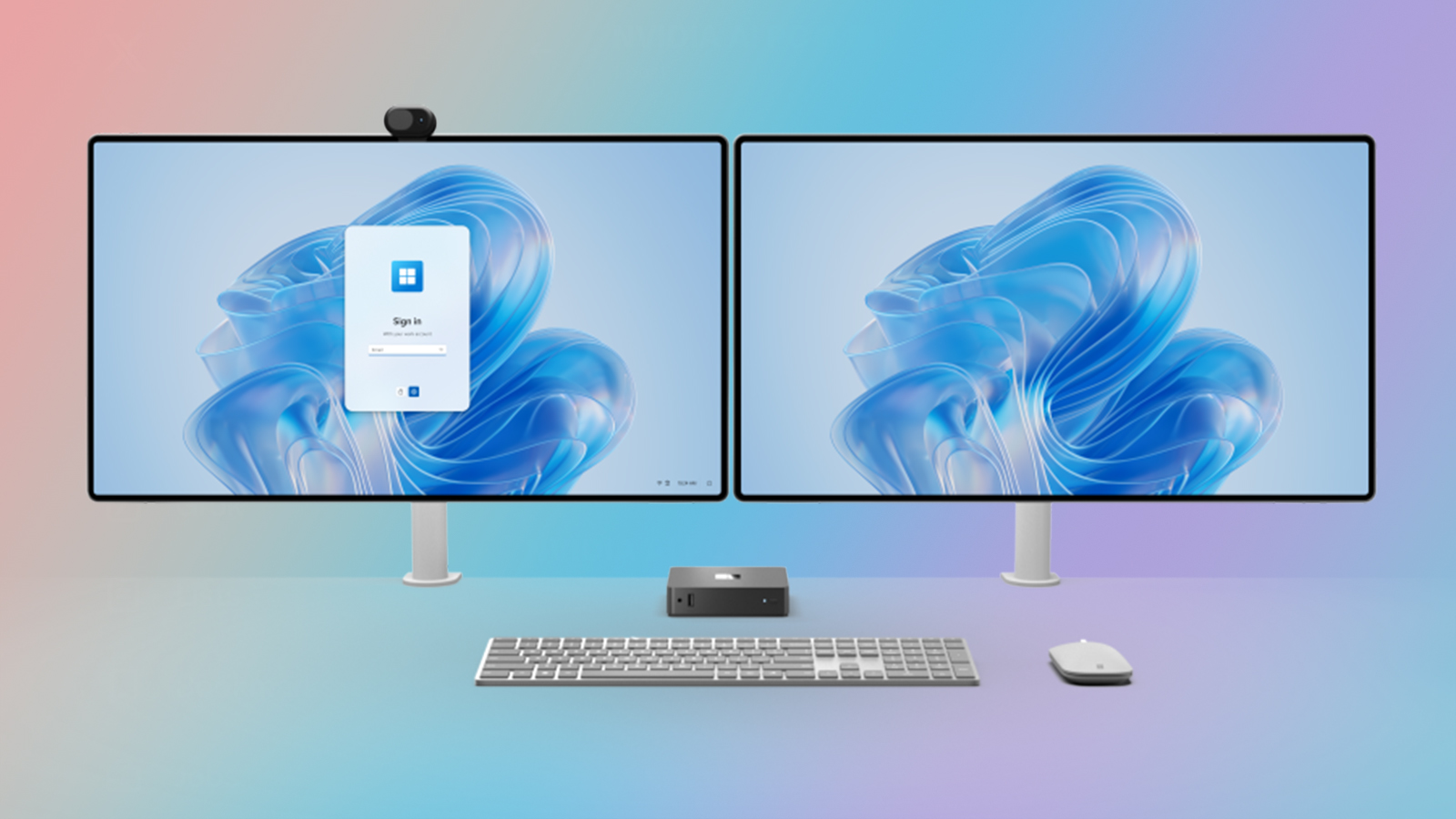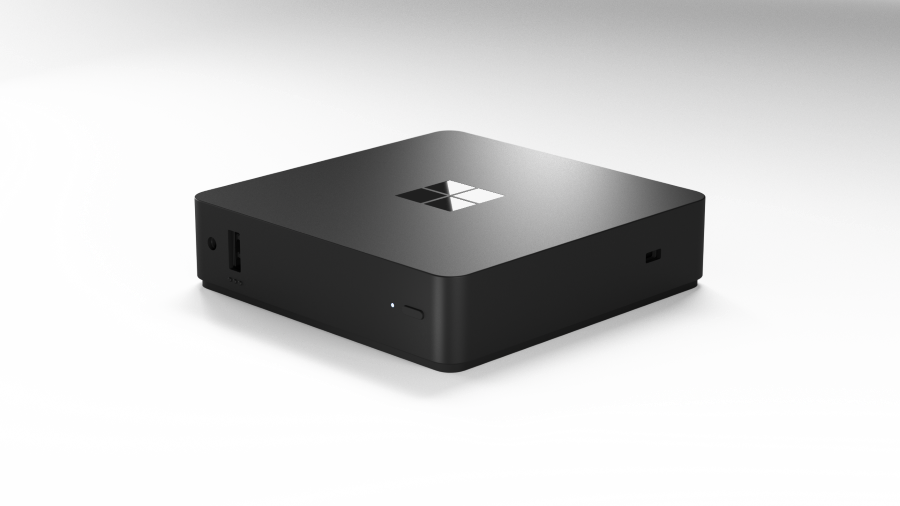Microsoft built a PC that can't run local apps — Windows 365 Link starts at $349 and doesn't come with storage
It's like the old IBM PCs, where you load the OS on your RAM but from the cloud instead of an 8-inch floppy disk.

Microsoft just launched the Windows 365 Link, a mini-PC designed to run Windows 365 Cloud PCs. The company said on its blog that it starts at just $349 and will connect quickly and securely to Windows 365 servers. This device is marketed toward businesses and enterprise customers, especially as these organizations sometimes replace their computers every two to five years.
However, you should note that you still need a Windows 365 subscription, priced between $28 to $315 a month per user. Microsoft says that its 4v CPU option with 16GB of RAM and 128GB of storage, starting at $66 a month per user, is most popular for employees “who only use Microsoft Teams, browsers, or Microsoft applications.” That costs $1,584 over 24 months — and when you add the $349 initial cost for the hardware, you’re paying nearly $2,000 for a basic cloud PC.
For just $1,299.99, you could get a Microsoft Surface Laptop powered by a Snapdragon X Elite chip, with a 15-inch touchscreen, the same memory size, and double the storage.
The specifications for the processor and memory are unknown. However, the Windows 365 Link features three USB-A ports, one USB-C port, one HDMI port, and one DisplayPort output. As a result, the device can accommodate up to two 4.K monitors. There's a 3.5mm audio jack for connecting headphones and a Kensington lock port for security. Regarding connectivity, there's one Ethernet port and Wi-Fi 6E with Bluetooth.
The company claims that the Windows 365 Link gives you a security advantage, especially as its locked-down operating system means end-users cannot install apps and store data locally. This helps reduce security vulnerabilities by locking down the device. It also offers passwordless authentication via Microsoft Entra ID and multifactor authentication via the Microsoft Authenticator app, QR code, or USB security key.


Despite the higher price, a few enterprise users have found the Windows 365 Link helpful. They say it allows workers to quickly rotate between stations without bringing their computers while keeping their files and access secure in the cloud. Furthermore, Windows 365 Link makes it easier for IT departments to manage cloud-based software and hardware.
Windows 365 Link makes no sense for individual users who have kept their computers for several years. But if you’re an enterprise with hundreds, if not thousands, of desk-bound workers that come and go, a cloud-based operating system might be an optimal solution for making it easier to manage your computer infrastructure while keeping everything secure.
Get Tom's Hardware's best news and in-depth reviews, straight to your inbox.
The Windows 365 Link won't be available until April 2025; you can ask to join the preview program if you live in the U.S., Canada, the U.K., Germany, Japan, Australia, or New Zealand. Microsoft recommends interested users contact their Microsoft account team to join the program before December 15.

Jowi Morales is a tech enthusiast with years of experience working in the industry. He’s been writing with several tech publications since 2021, where he’s been interested in tech hardware and consumer electronics.
-
pug_s They are trying to make something like an overpriced $350 Citrix Wyse Terminal but run cloud apps which cost money. Gees, can't Microsoft allow you to use a low end microsoft desktop and connect apps in the cloud instead?Reply -
bit_user Reply
Too much. For what it's doing, it should probably cost no more than half of that. Since they're making money on the subscriptions, they don't need a profit margin on the hardware, as well.The article said:The company said on its blog that it starts at just $349
Anyway, it just underscores my believe that Microsoft now regards Windows as little more than a delivery platform for their cloud services. -
JamesJones44 This idea seems to resurface every 10 years. The infrastructure certainly exists now, but I'm not sure the result will be different from past attempts. Latency is always going to be an issue for professionals and general consumers don't use desktops much these days. I could see maybe a laptop for general consumers having some success, but at price points much lower than what this desktop suggests they would charge ($700-800)Reply -
JamesJones44 Reply
100%. It feels like they are executing a plan where everything runs remotely, games, apps, etc. so they can control the distribution. IDK if it will succeed, but it seems like that is where they are going.bit_user said:Anyway, it just underscores my believe that Microsoft now regards Windows as little more than a delivery platform for their cloud services. -
ezst036 ReplyAdmin said:However, you should note that you still need a Windows 365 subscription
^^^^^^^^^^ This.
Admin said:The company claims that the Windows 365 Link gives you a security advantage, especially as its locked-down operating system means end-users cannot install apps and store data locally.
Sounds kind of like an immutable Linux distribution. -
bit_user Reply
What latency? They're not saying it's a remote desktop frontend for VMs in the cloud, I think. The apps probably run locally, but are loaded from Azure and your storage is on OneDrive. At my job, we use OneDrive and it's pretty okay.JamesJones44 said:This idea seems to resurface every 10 years. The infrastructure certainly exists now, but I'm not sure the result will be different from past attempts. Latency is always going to be an issue for professionals
The app loading is probably streamlined via OneDrive-style local caching, so that you're not always waiting for the executables and DLLs to download, every time you run something. -
JamesJones44 Reply
The Aretechnica article makes it sound like everything is remote minus a thin OS for connecting to peripherals. It does have 64 GB of local storage which I'm sure is for caching, but that's pretty small overall. For light workloads it's probably ok.bit_user said:What latency? They're not saying it's a remote desktop frontend for VMs in the cloud, I think. The apps probably run locally, but are loaded from Azure and your storage is on OneDrive. At my job, we use OneDrive and it's pretty okay.
The app loading is probably streamlined via OneDrive-style local caching, so that you're not always waiting for the executables and DLLs to download, every time you run something.
https://arstechnica.com/gadgets/2024/11/microsoft-builds-a-349-mini-desktop-but-only-for-accessing-windows-in-the-cloud/ -
EzzyB I always chuckle at these types of things. Microsoft has reinvented the mainframe terminal!Reply
